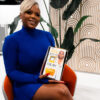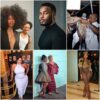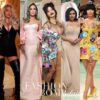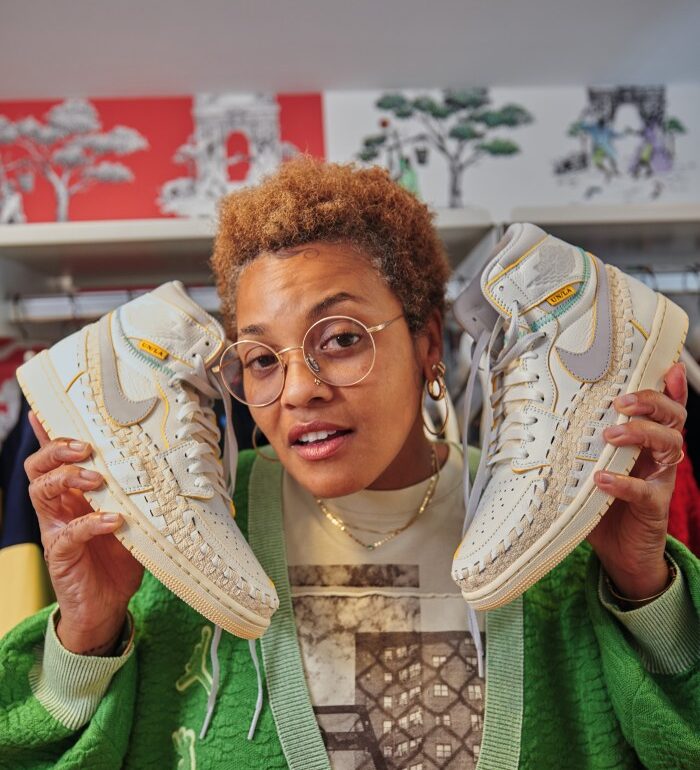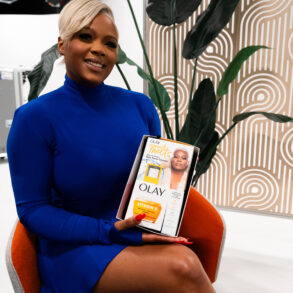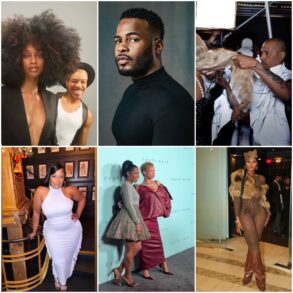As the co-owners of Los Angeles-based Union, one of the longest-running boutiques in streetwear and a constant in a fickle industry, Beth Birkett Gibbs and Chris Gibbs are a husband-and-wife team and a power couple in the sneaker world. In late August, they will release their next offering in collaboration with Jordan Brand based on the story of their love for each other.
Their unique collaborations with brands such as Nike, Adidas, and New Balance garner considerable praise. But their Air Jordans projects, dating to 2018’s Air Jordan 1 releases, generate the most hype and critical acclaim.
Their latest work is a collaboration between Jordan Brand, Union and Bephies Beauty Supply, a company dedicated to building a community for Black women through beauty and fashion, founded by Birkett Gibbs in 2020. The his-and-hers collection includes apparel and two sneakers — an Air Jordan 1 High OG and an Air Jordan 1 Elevate — in an ode to the summer of 1996 when the couple first met on a subway platform in Brooklyn, New York. The music, the budding streetwear scene and the borough community represented a unique period for the Gibbs.
Union’s latest Air Jordan 1 models reflect that mixture of the elements. The primarily white upper paired with a sail sole comes together with an unusual twist — a woven pattern that runs along the lateral portion of the shoe. When early photos leaked, many considered the woven element a callout to the Nike Air Footscape, the cult sneaker that introduced the asymmetrical pattern.
For the Gibbs, the design started in a much different place.
Drawing from the past, Birkett Gibbs recalled similar fabric techniques on items such as her grandmother’s sandals and her grandparents’ wicker furniture. The weave took on a more symbolic meaning when they considered the beginning of their relationship and the various groups mixed to form communities in Brooklyn during the summer of 1996. They took these elements to create the latest entry in their work with Jordan Brand.
Before the August 24 release, Andscape spoke with the Gibbs about how the collection came together and how they navigated working together on the project while finding ways to inject their individual interpretations into the footwear and apparel.
This interview has been edited for length and clarity.
Following the success of your Jordan 1 in 2018, what made you all want to do another Jordan 1?
Chris Gibbs: Jordan approached both of us and asked us if we would do a project together. This was maybe three years ago. Then, the next step would be to pitch an ideation deck around. They’re big on story, so pitch a story and try and start talking around the footwear and apparel that goes with that story.
And so Beth and I forwarded our genesis story, the story of how we met, and they liked it. And they were like, ‘Yeah, let’s go.’ As we started to dial in on it, they made a quick pivot. I’m not sure why, but they decided they thought it would be better if Beth launched her shoe first. And so the Air Jordan 7 that launched last summer was the first step.
We started working on the next step, which was our launch that we’re doing this summer. And the original ideation was what we would have been wearing when we met. We met in the summer of ’96, so this collection is called Summer ’96. As a skater and an overall dirtbag, I probably would’ve been wearing a beat-up pair of Jordan 1s. So we pivoted back to the 1s for that.
Originally, the idea was for her to do an Air Jordan 11, so I would do an Air Jordan 1. And it’s at that moment we found out they don’t do collaborations on Jordan 11s. The fact that both of us were surprised tells you everything you need to know. So what we ended up doing is his-and-hers Air Jordan 1s.
The Air Jordan 1 that you guys did was huge, so I’m curious if there was pressure not to do it. Or is it that this new shoe differs from the first one, so you’re creating a different chapter in the narrative?
Birkett Gibbs: When I designed the Jordan 7, I didn’t want it to be a woman’s shoe. I wanted to make a gender-neutral shoe. And so I picked a Jordan 7 because I just thought, ‘Hey, at the very least, I’m tapping into the fans of the 7, because I’m a fan of the 7 and the Huarache.’
When we didn’t have the sizing for men, and it was only for women, I felt it was super limiting. That changes a whole lot. I learned that women don’t typically buy sneakers at the same rate as men. And we normally buy them from men because we trust men to design the sneakers. And I’m this new female entrepreneur in this world.
It was still successful, and I learned a lot. And through that learning process, I get why most people do Jordan 1, Jordan 4, or whatever. And I wish I had done a more popular shoe.
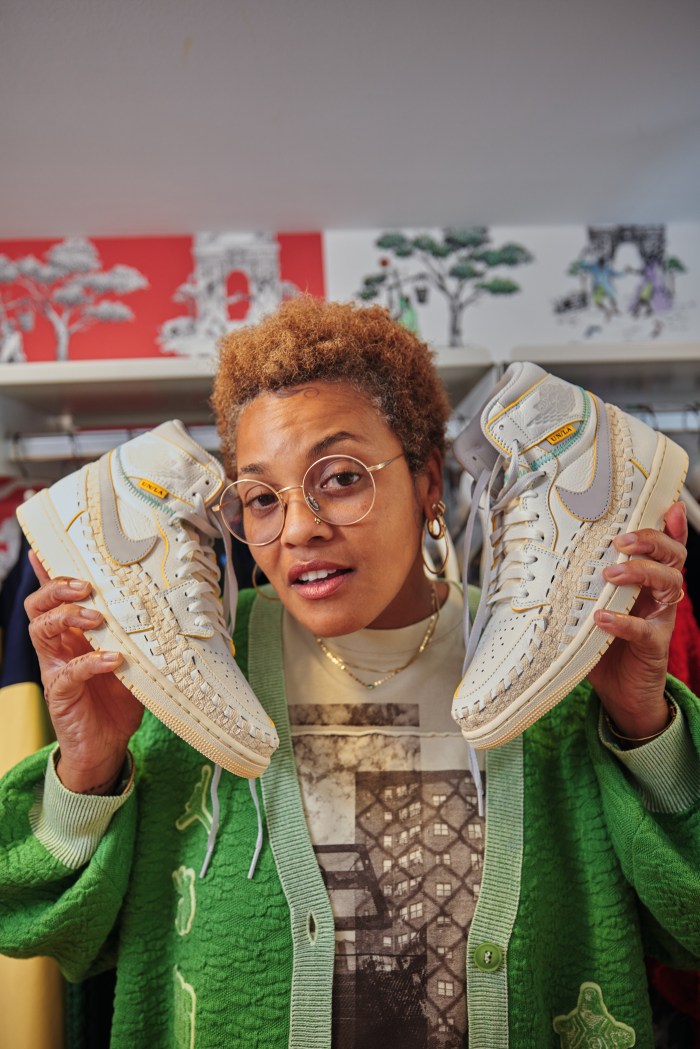
Mark Clennon for Andscape
Can you go more in-depth on the division of labor and where your fingerprints are on the collection?
CG: The ideation starts with us thinking about summer ’96 and how we met, and what was happening in particular in fashion around the time we met. As we started to look back, we realized it was an incredible time. We discovered that Fugees’ album dropped then, and Erykah Badu’s album dropped around that time. Brooklyn was then still a best-kept secret. This predates Williamsburg and the gentrification happening in Brooklyn now, so it was a special place. Brooklyn was, at that time, very bohemian. There was the intersection of different cultures, people, and lifestyles. We took a metaphorical take on that through the lens of this woven intersection of community.
Coincidentally or not, around that time, fashion was very Afrocentric. There were a lot of knits. You would wear a knitted tam. We tried to incorporate those things into the design’s overarching mindset. And you see that in the footwear and the apparel. We pivoted from this woven idea and landed on taking the Nike Footscape, taking that woven detail that ran through the shoe and applying it to both of our shoes.
And then the knit, we also applied the woven metaphor in our apparel. I used knit largely in the short. I took the archetypical Jordan basketball short and made a knit version.
BG: Yeah, my take was being of Caribbean descent, the woven, in terms of fabric, was something that I saw a lot in Jamaica. My grandmother always had these slides, and they had this little weaving on the toe. Our chairs and a lot of the furniture in my grandmother’s home also reflected that. So it was a nod to that, as well as the ’90s being a very, they used to call it ‘crunchy nutty,’ whether it was hip-hop, fashion, everything done in knit. I thought that was a cool modern twist on the woven, specifically in furniture design, which has made a comeback, which I’m also into. There was more of a mesh in the last Jordan I did. So that just becomes something that represents me being Jamaican.
You work together daily and have a family together. Did you do the collections collaboratively, or was it, “Hey, I got this and you got that”?
BG: We do a lot of the things separately. Chris has his Union team, and I have BBS. So a lot of the things we do are separate, unfortunately. I’ll ask him for advice on anything that I need to be made. We come together on the colors.
The shoe was the thing that we had to collaborate on. We just have different ways of approaching design. I like to have a story because it’s everything. And the story was the woven, which helped me figure out what the clothing was going to be. When I did the clothes, I did a cardigan with this different, tighter woven knit. It’s like a Coogi sweater, which is a nod to the ’90s. Texture was the motivation behind the clothing collection.
CG: It was a mix of sometimes working in a vacuum and working together on our individual ideas. We shared those ideas as they progressed, which maybe helped inform each other’s ideas, and shared a color palette, which you see predominantly in the footwear but also the apparel.
I’m curious about the footwear and the choices, from the stitching to the colors you all picked. Is there any symbolism representing your relationship or origin story?
BG: I would say it’s the weaving on the shoe, just because weaving represents so many different things — it could represent the weaving of a relationship, of a budding relationship, which represents us. But, it also represents, at that time, the weaving of music, fashion, and this new culture happening simultaneously.
And community was a big thing then. So it’s just a nod and paying homage to a different way of weaving, which I still think could exist in a modern form and probably needs to. The timing of the release is important because we lack those communities in real life. They’re a lifeline for many people, whether in relationships or mental health. The weaving just incorporates everything.
CG: Although we landed on taking this from the Footscape, it’s not where it started. It wasn’t like, ‘Yo, let’s do the Footscape.’ It was more that some of the ideas came, as Beth alluded to earlier, from her grandparents’ wicker furniture. So that’s where it started. Even early iterations of the shoe have a different pattern and placement of how we ideated the weaving. But, where we landed was using that woven pattern and placement on the shoe from the Footscape.
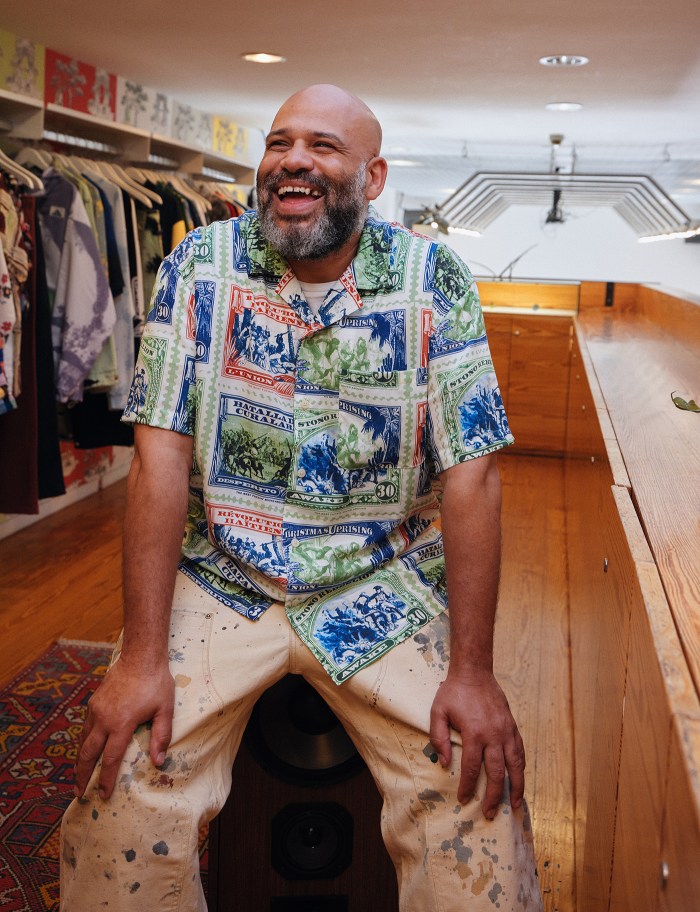
Mark Clennon for Andscape
The Footscape earned cult status in Japan. And you all have a long relationship with Japan. Was that history not even considered and just coincidental because of the weaving aspect?
CG: The collection is more about an era of fashion. Let’s say starting in around ’96 again, which is when we met shortly after, maybe a year after that. Beth is the one who got me the job at Union. Beth introduced me to streetwear. And so there’s a certain, I would say, from ’96, there’s an eight-year span of streetwear, and those sensibilities are starting to overlap with sneaker culture. So in 1996, there was no limited-edition special shoe, no [Nike] HTM, and none of that exists yet. You can get your white-on-white Air Force 1s. There are very limited palettes of colorways generally.
But by the early 2000s, Nike had earmarked this market and realized there were people like Beth and myself and our contemporaries who wanted something different and unique. The Footscape is a part of that story, and we happen to pull it out because it makes sense with the woven aspect.
You can’t talk about streetwear without talking about Japan and the Footscape is big there. But, I don’t think the shoes are specifically a love letter to Japan, but the collection is a love letter to when we met in that era and the things that were happening in our relationship, as well as around us, at that time, the late ’90s and early 2000s.
BG: And around that time, I remember working at Stussy and Japanese customers would come and buy out everything, and James [Jebbia, one of the original owners of Union and founder of clothing brand Supreme] had to be like, no. He had to make rules on how much you could buy. Then, Japanese customers eventually went to Union, where Chris probably saw Japanese interest in streetwear more. But that wasn’t until like the early 2000s.
Is there anything else we can expect that tells the story of your relationship? Beth, I know you do many of the visuals for the collections. Is that encompassing a more personal story?
CG: We used our son and his girlfriend as the main models in our video and photo shoot to hint at our relationship. And we shot in Brooklyn, where we met, so Brooklyn’s a part of this. I think it’s worth mentioning that, to date, anything public has been a leak, so we haven’t engaged in the storytelling yet. Once we do, the story will be pretty evident between our video and the photo shoots that we’re doing, other interviews that we’re doing, and the collection. The box says summer ’96 on it. The apparel people get excited about the shoes and don’t leak them, but the apparel is pretty telling.
It’s a holistic collection telling a pretty earnest, and organic story. Everything that we’re doing will touch on that. At some point, we were thinking about telling our literal genesis story around the marketing, but we realized that story was bigger than this project could handle. So Beth is working on it. It won’t be related to the sneaker release, but we’re shooting our story of how we met as a separate venture in her filmmaking.
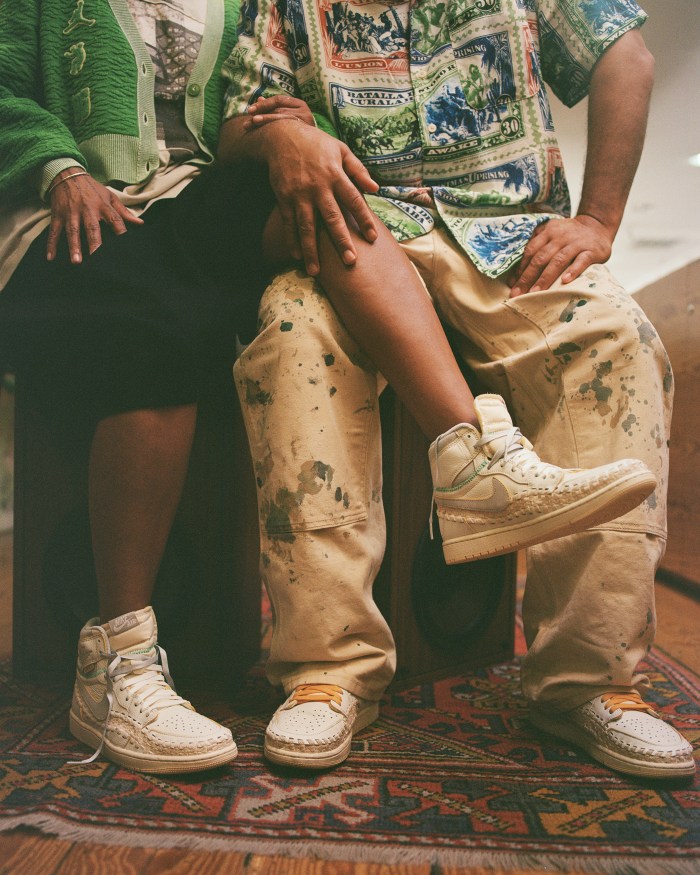
Mark Clennon for Andscape
How would your younger selves react if somebody had told you all in 1996 that you’d have a Jordan collab one day?
CG: I wouldn’t have expected it at all. It wouldn’t have been on the radar. In ’96, sneakers were cool, but they weren’t this big thing in our lives. Until I started to work at Union, I wasn’t that into fashion, so it would’ve been crazy saying that I continued a career in fashion in ’96. At the time, I was in college to be a teacher. Beth was closer to fashion than I was at the time, so it might’ve made more sense to her.
BG: Sneakers were new then. There were only East Coast and West Coast people repping for sneaker culture. I’m not trying to speak on behalf of the Midwest and the South because I wasn’t there. But it was one of those things in New York specifically. I came from Los Angeles, and sneakers were a thing there. It was a different sneakerscape, but it was all lifestyle. In Los Angeles, the Cortez was huge. On the East Coast, you had the Air Force 1. The Dunk was supernew at the time. And for women wearing sneakers, it was new.
What do your kids think about you two putting out a sneaker together? Does it register, or it’s just standard stuff going on?
CG: They’re pretty spoiled.
BG: They’re used to us working on something design-related, especially Chris with the shoes, so it’s not a big deal. But their friends have asked about the drops for sure.
CG: And their friends’ parents.
What would be the pinnacle of this collection? To go out and see people on date night rocking his-and-hers or are you just happy to see people out there in it?
BG: We’re just happy to see people enjoying the shoe, because it’s really a well-done shoe.
This post was originally published on this site be sure to check out more of their content.

